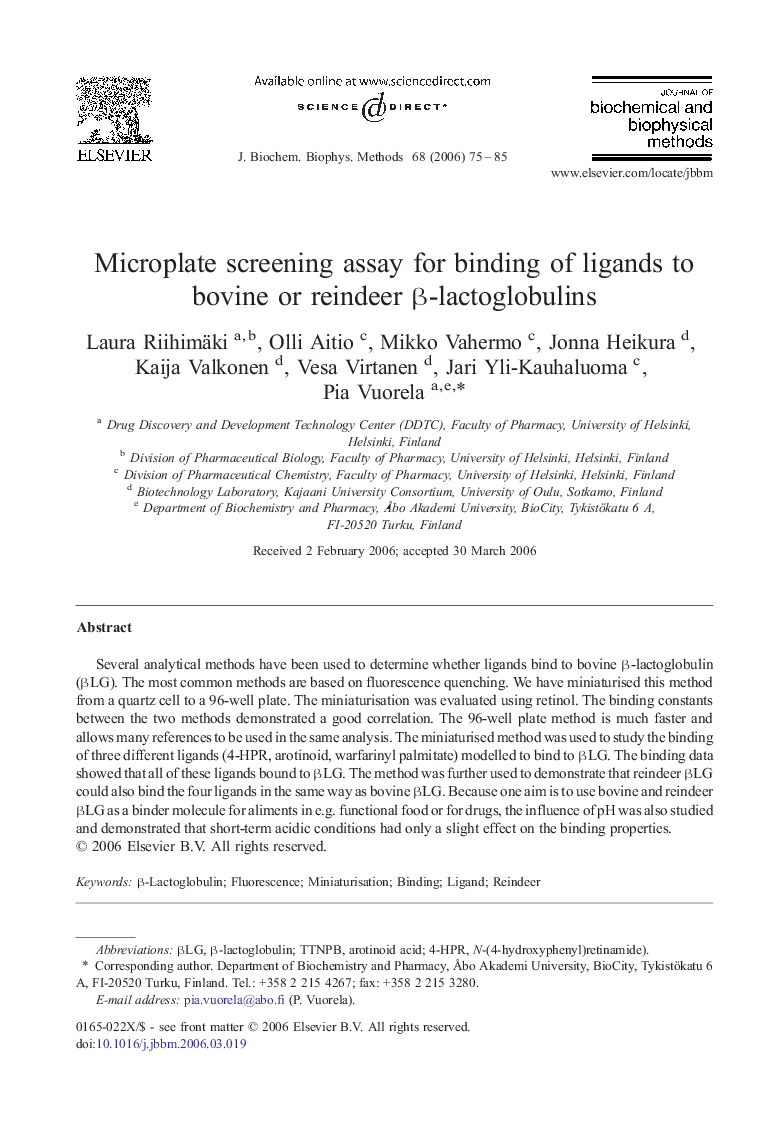| Article ID | Journal | Published Year | Pages | File Type |
|---|---|---|---|---|
| 1988621 | Journal of Biochemical and Biophysical Methods | 2006 | 11 Pages |
Several analytical methods have been used to determine whether ligands bind to bovine β-lactoglobulin (βLG). The most common methods are based on fluorescence quenching. We have miniaturised this method from a quartz cell to a 96-well plate. The miniaturisation was evaluated using retinol. The binding constants between the two methods demonstrated a good correlation. The 96-well plate method is much faster and allows many references to be used in the same analysis. The miniaturised method was used to study the binding of three different ligands (4-HPR, arotinoid, warfarinyl palmitate) modelled to bind to βLG. The binding data showed that all of these ligands bound to βLG. The method was further used to demonstrate that reindeer βLG could also bind the four ligands in the same way as bovine βLG. Because one aim is to use bovine and reindeer βLG as a binder molecule for aliments in e.g. functional food or for drugs, the influence of pH was also studied and demonstrated that short-term acidic conditions had only a slight effect on the binding properties.
